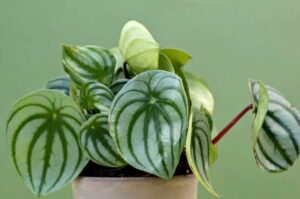The Ultimate Guide to Growing Taller Ponytail Palms
Have you ever noticed that the indoor Ponytail palm tree doesn’t grow taller like the other plants? If you want a taller Ponytail palm, then this article is for you.
There are a few things that you can do to help make your Ponytail palm grow taller.
Water your Ponytail palm regularly. The soil should be slightly moist but not too much wet or dry. Choose a bigger pot to grow a taller Ponytail palm. It will give more room for root development, providing more growth to the plant. Fertilize it periodically with a good fertilizer. Keep it healthy by choosing the proper sun exposure and watering during the hottest months.

By implementing these easy tricks, you can easily make your Ponytail palm tree reach its full height. Providing it with the right amount of water and fertilizer and the palm is good to go. Also, make sure it gets plenty of sunlight. You can also stake it, so it doesn’t fall over in strong winds.
How to Make Your Ponytail Palm Tree Grow Taller
So, you’ve got yourself a Ponytail palm tree, and you’re eager to watch it grow tall and strong. Good for you! Here are a few tips to make that happen.
- The first thing you need to do is make sure your tree is getting enough light. Ensure your tree is in a sunny spot.
- It needs at least six hours of sunlight per day to grow properly. Consider using a grow light if you can’t provide enough natural light.
- Watering is another crucial factor determining the height of Ponytail palms. It would be best if you water your palms regularly.
- But remember not to overwater. Too much water can kill your tree, so be mindful of the amount you give it.
- Your aim should be to ensure the soil is moist but not wet.
- Finally, fertilize the Ponytail palms twice a year with good palm fertilizer because fertilizer is essential for healthy growth.
- Use a high-quality palm tree fertilizer once a month to help your tree reach its full potential.
With proper care, your Ponytail palm will grow like crazy in no time!
Flowers of Ponytail palms
Yes, these palms produce flowers too, but hardly ever indoors. And even if you grow them outdoors; the flowers are ordinary.
Ponytail palm has long leaves clustered at the top of the trunk and can take up to five years before they start producing flowers. The flowers are greenish-yellow and have a foul smell when they first bloom, but this smell dissipates as the flower matures.
Height of Ponytail palms
Out in the fields, ponies will reach a height of 15 feet (4.5 meters), but indoors, they will only grow as tall as about 4 feet (1.2 meters). Their size indoors will not surpass this throughout their life.
The growth rate of Ponytail palms
Ponytail palm trees are a popular indoor plant but can also be grown outdoors in warmer climates. However, there is a difference in the growth speed indoors vs outdoors.
Ponytail palms prefer warm temperatures and like to live indoors. They can grow up to 15 feet and have long, thin leaves that grow from the top of the trunk.
But you might not see any growth or even experience stunted growth in dimly lit conditions.
However, in optimal conditions, you’ll observe the sportive growth of these unique trees.
Tips for Growing a Taller Ponytail Palm Tree
Now that you know more about how to grow a taller Ponytail palm tree, it’s time to put that information into practice. Here are a few tips to help you out:
- Make sure your tree is in soil that drains well. Ponytail palm trees don’t like sitting in water, so if your soil doesn’t drain well, you’ll need to find a way to improve that.
- The Ponytail palm doesn’t like to be waterlogged, so don’t overwater. The ideal way to water it is to wait until the topsoil is dry to the touch before watering it again.
- Fertilize your tree regularly. A good fertilizer will help your tree grow tall and strong.
- Give your tree plenty of sunlight. This is especially important if you’re trying to grow a taller Ponytail palm tree.
- And lastly, be patient! It takes time for a tree to grow tall, so don’t get discouraged if your tree doesn’t seem to be growing as fast as you’d like it to.
Management Tips for Ponytail Palms
- Always start with a healthy plant. And if the leaves are turning yellow or brown, this could be a sign that your tree isn’t getting enough moisture.
- Prune away any dead or dying leaves. This will help encourage new growth and make your Ponytail palm tree look fuller and healthier.
- Use a high-quality fertilizer designed explicitly for palms to ensure optimal growth. Apply the fertilizer around the base of the tree, careful not to get any on the leaves or trunk.
Ideal Growing Conditions for a Ponytail Palm Tree
Palms are one of the most popular plants in the world. They are known for their ability to thrive in a variety of environments and their ability to provide a tropical feel to any space.
- They are an excellent choice for indoor and outdoor areas because they can grow up to 10 feet tall with a trunk 2-3 inches wide.
- Though these trees are one of the most popular, they are slow-growing and don’t show equal growth. For example, some Ponytail Palms can grow up to 10 feet tall, while others grow as tall as 30 feet. However, they need a lot of sunlight and water to grow taller.
- You can grow them in containers, a garden bed, or the ground; they need at least four hours of sunlight each day.
- They grow in wet, swampy areas and can survive in water up to one foot deep.
- Ponytail palms are native to Brazil, Argentina, Paraguay, and Uruguay.
- They grow best in full sun or shade and need moist, well-drained soil.
- They like temperatures between 65-75 degrees Fahrenheit but can also tolerate temperatures between 40-90 degrees Fahrenheit.
Possible problems with Ponytail palms
Here are the most common issues that can inhibit your Ponytail palm’s growth:
- Curly leaves or brown tips
This tends to happen if the humidity is low. Once the leaves are brown, the green is no longer growing, so cut the tips off. Then, try to find more ways to increase humidity using this technique to stop similar instances in the future.
- The soft neck of the palm
By and large, in response to features of environment and pest conditions, the Ponytail Palm plant is known to be tolerant. But it may sometimes develop a soft neck due to overwatering or pest infestation.
- Overwatering
These plants would rather stay underwatered than overwatered.
It’s consistently ideal to water infrequently, and when you wet it thoroughly, the roots do not appreciate the constant saturation.
In addition, the pups have difficulty getting out of the soil if the plant is grown in dim light or if the temperature is cold.
Also, ensure proper drainage of pots so the plants can drain excessive water.
- Pest
In the dark green parts of the leaf appears white fuzz. This shape is sometimes called the calling card of Mealybugs. They can look tiny and inactive or only go about their business, but it’s always best to address and eliminate pests.
- Mealybugs
Mealybugs resemble woodlice swathed in cotton wool. The treatment is the same as for Scale insects listed above; however, you may be able to do without the methyl alcohol and use water if you prefer not to use harsh chemicals. Using neem oil will also work.
- Scale insects
Scale is a bothersome insect that devours plant sap. Look closely for small brown deposits scattered on the leaves; seek out these to eliminate them and the eggs. Kill the insects that reside underneath them and on the leaves.
Use a cotton bud soaked in methylated absinthe, and scrub the holes with a cloth soaked in spirit, which will help eliminate dirt and scale from the leaves.
You can also use a commercial plant spray, but it might not be as effective due to the scale and insects’ clinging closely to the leaf surface, which can lead to difficulty getting to the outer shell.
Is your Ponytail palm not growing?
You might provide optimal growing conditions to your palm and still experience stunted to no growth.
In such a case, check to see if insects cause slow growth, and keep an eye out for Scale insects, Mealybugs, and other pests. Also, ensure that the area is well-lit, the temperature is excellent, and you’re frequently watering. These factors can help to stimulate the growth of plants.
If all these conditions have not yet been fulfilled and there have been no active growth patterns after a few months, consider repotting the plant.
But before you repot, try changing your feeding routine. Don’t increase dosage levels; increase the number of times you provide feed.
Conclusion
So how do you make your Ponytail palm tree grow taller? It’s pretty easy. You need to make sure it gets enough sunlight and water. The sun provides the tree’s energy to produce, while water helps it absorb nutrients from the soil.
Keep an eye on your tree and give it a fertilizing boost when you see it grow a bit slower. This will help get your tree back on track and grow taller.






